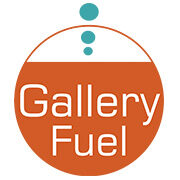You know marketing is an investment in your art gallery’s future. How much should your gallery be spending on marketing, and how do you decide where the budget should be spent? That’s is what we are going to look at in this article.
![]() This article is for members only.
This article is for members only.
Learn more about becoming a member and let Gallery Fuel help you master the sales and marketing strategies you need for your gallery's future.
Already a member? Login below.
Gallery Fuel
Central Virginia, USA
Email: Publisher AT GalleryFuel.com
